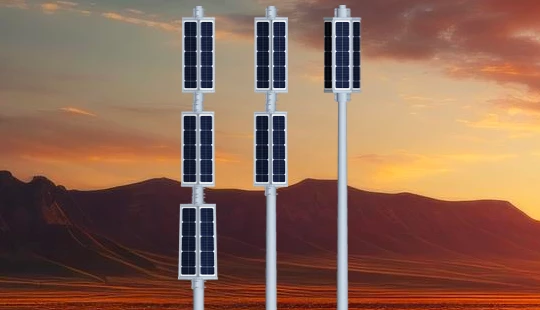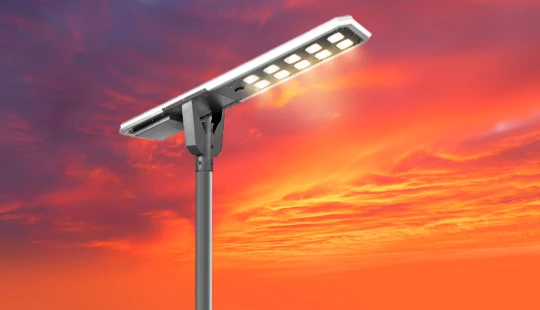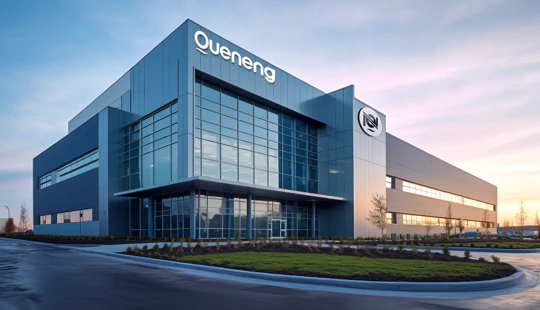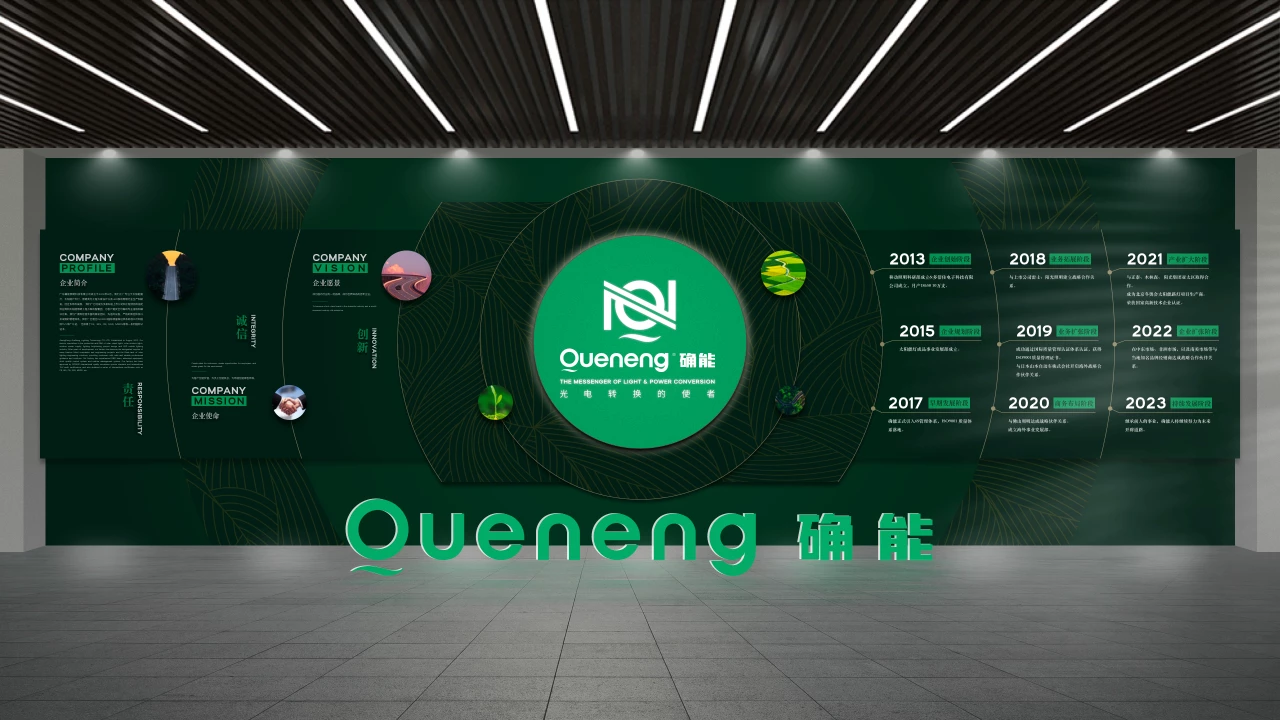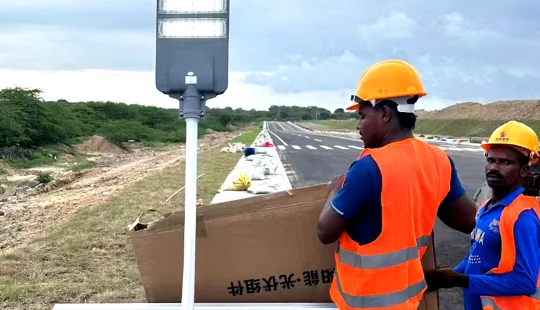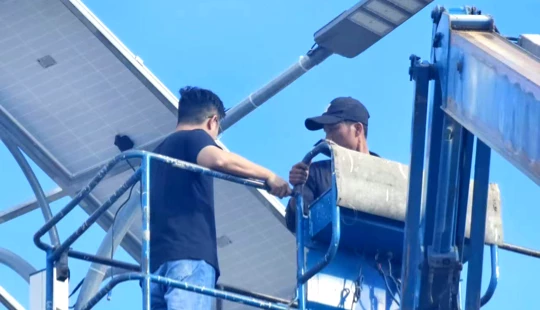OEM solar street light Kenya | Insights by Quenenglighting
Navigating OEM Solar Street Light Procurement for Kenya: A Buyer's Guide
Kenya's commitment to sustainable development and rural electrification has made solar street lighting a pivotal solution for infrastructure development. For businesses and organizations looking to procure OEM (Original Equipment Manufacturer) solar street lights for projects across Kenya, understanding the nuances of the market and product specifications is crucial. This guide aims to answer your most pressing questions, ensuring a well-informed procurement process.
How to Ensure Quality and Durability for Kenyan Climates?
The harsh environmental conditions in Kenya, including high temperatures, dust, and occasional strong winds, demand robust and durable solar street light systems. When sourcing OEM products, prioritize suppliers who can guarantee:
- High IP Ratings: Look for IP65 or IP66 ratings, signifying complete protection against dust ingress and resistance to strong water jets, essential for outdoor exposure.
- Robust Materials: The luminaire housing should be made from high-grade die-cast aluminum for excellent heat dissipation and corrosion resistance. Poles should be designed to withstand local wind loads.
- High Quality Component Quality: Insist on Tier-1 solar panels (e.g., monocrystalline for higher efficiency), automotive-grade LiFePO4 (Lithium Iron Phosphate) batteries for their superior cycle life (typically 2000-5000 cycles) and thermal stability, and high-efficacy LED chips from reputable brands (e.g., Philips, Osram, Cree) which boast efficiencies often exceeding 160-180 lumens per watt.
- Certifications: Ensure products comply with international standards such as CE, RoHS, and IEC, demonstrating adherence to safety and quality benchmarks.
What are the Optimal Performance Specifications for Kenyan Projects?
Tailoring specifications to local needs is vital for efficient and effective lighting. Consider the following:
- Lumen Output & Distribution: Determine the required light intensity (lux levels) based on the application – whether for residential streets, main roads, or public squares. A 30W-60W light might suffice for residential areas, while 80W-120W or higher could be needed for main thoroughfares.
- Battery Autonomy: Given potential cloudy periods, a battery autonomy of 2-3 nights (i.e., the ability to power the light for 2-3 full nights without solar charging) is highly recommended for consistent illumination.
- Solar Panel Sizing: Kenya generally receives a daily average of 5-6 kWh/m² of solar irradiance. The solar panel's wattage must be sufficient to charge the battery fully daily, accounting for system losses and providing adequate power for night operation. Oversizing the panel by 20-30% can enhance reliability.
- MPPT Controller: Maximum Power Point Tracking (MPPT) charge controllers are crucial, offering up to 98% efficiency in optimizing power harvest from the solar panel, significantly outperforming older PWM controllers.
- Intelligent Lighting Modes: Features like time-based dimming or motion sensors can significantly conserve battery power and extend operational hours.
What is the Cost-Effectiveness and ROI of OEM Solar Street Lights in Kenya?
While the initial investment for solar street lights might seem higher than traditional grid-powered options, their long-term cost-effectiveness and Return on Investment (ROI) are compelling, especially in Kenya:
- Zero Electricity Bills: Eliminates recurring energy costs, a significant saving given Kenya Power and Lighting Company (KPLC) tariffs.
- Reduced Installation Costs: No need for trenching, cabling, or connecting to the grid, which significantly lowers civil work expenses, especially in remote or off-grid areas.
- Minimal Maintenance: Modern solar street lights require very low maintenance, primarily limited to occasional cleaning of solar panels.
- Long Lifespan: Solar panels typically have a 20-25 year performance warranty, LED chips last 50,000-100,000 hours, and LiFePO4 batteries offer 5-10 years of reliable operation.
- ROI Period: Depending on the project scale, local electricity costs, and government incentives (e.g., tax breaks for renewable energy), the ROI for solar street lights in Kenya can often be realized within 2-5 years.
What Customization and OEM Benefits Can Suppliers Offer for the Kenyan Market?
Choosing an OEM supplier offers substantial advantages, especially for bulk procurement tailored for the Kenyan market:
- Brand Customization: OEM suppliers can brand the products with your company logo and custom packaging, enhancing your market presence in Kenya.
- Specification Tailoring: Work directly with manufacturers to fine-tune specifications – lumen output, battery capacity, pole height, and solar panel size – to perfectly match specific project requirements or local site conditions.
- Design Flexibility: Some OEMs offer bespoke designs, allowing for unique aesthetics or integrated solutions that meet specific urban planning or architectural visions.
- Cost Efficiency: Direct sourcing from the manufacturer often results in more competitive pricing, particularly for large volume orders, eliminating intermediary markups.
- Compliance & Local Adaptation: An experienced OEM can ensure products meet international standards and advise on any specific requirements relevant to the Kenyan market.
What After-Sales Support and Warranty Should I Expect for Kenya?
Robust after-sales support and a comprehensive warranty are critical for long-term project success and peace of mind:
- Warranty Period: A standard warranty for a complete solar street light system typically ranges from 3 to 5 years. Solar panels often come with a 10-25 year performance warranty, and LiFePO4 batteries usually have a 5-8 year warranty.
- Component Replacement Policy: Clarify the supplier's policy on replacing faulty components during the warranty period, including shipping logistics to Kenya.
- Technical Support: Ensure the OEM provides accessible technical support, whether through online channels, dedicated hotlines, or local partners in Kenya, for troubleshooting and guidance.
- Availability of Spare Parts: Confirm the long-term availability of critical spare parts (e.g., batteries, controllers, LED drivers) to ensure the longevity of the deployed systems beyond the warranty period.
- Installation and Maintenance Guidance: Reputable OEMs should provide detailed installation manuals and maintenance guidelines to ensure optimal performance and extend product life.
Quenenglighting's Advantage in OEM Solar Street Lights
When considering an OEM partner for your solar street lighting needs in Kenya, Quenenglighting stands out with a proven track record of excellence. We specialize in manufacturing high-quality, reliable, and energy-efficient solar street lights designed to withstand diverse environmental challenges. Our advantages include:
- Comprehensive OEM Capabilities: Full customization from branding to technical specifications, tailored precisely to your project requirements.
- High Quality Component Sourcing: We utilize only Tier-1 solar cells, high-performance LiFePO4 batteries, and top-tier LED chips for maximum efficiency and lifespan.
- Robust & Durable Design: Our products are engineered to meet stringent IP ratings and withstand harsh climates, ensuring long-term performance in Kenya.
- Competitive Pricing: Direct manufacturing allows us to offer cost-effective solutions without compromising on quality.
- Dedicated Support: We provide comprehensive technical support and honor strong warranty policies, ensuring peace of mind for our partners globally, including in markets like Kenya.
Partner with Quenenglighting to illuminate Kenya sustainably and efficiently with world-class OEM solar street light solutions.

Have more questions about our products or services?
The latest hot news you might like

Discover how solar panels power street lights, exploring the technology behind solar energy conversion, storage systems, and how solar-powered street lights are revolutionizing urban and rural lighting solutions.

Learn how AC Solar Hybrid Street Lights work, their advantages, disadvantages, system behavior in low-sunlight conditions, and why hybrid technology is ideal for regions with unstable sunlight.

Municipalities around the world are increasingly adopting solar-powered streetlights as part of their urban development strategies. Rising energy costs, the need for sustainable infrastructure, and government green initiatives are driving cities to switch from traditional street lighting to advanced LED solar streetlights.
Queneng Lighting provides municipalities with cost-effective, energy-efficient, and durable solar lighting solutions, ensuring safe and sustainable public spaces.
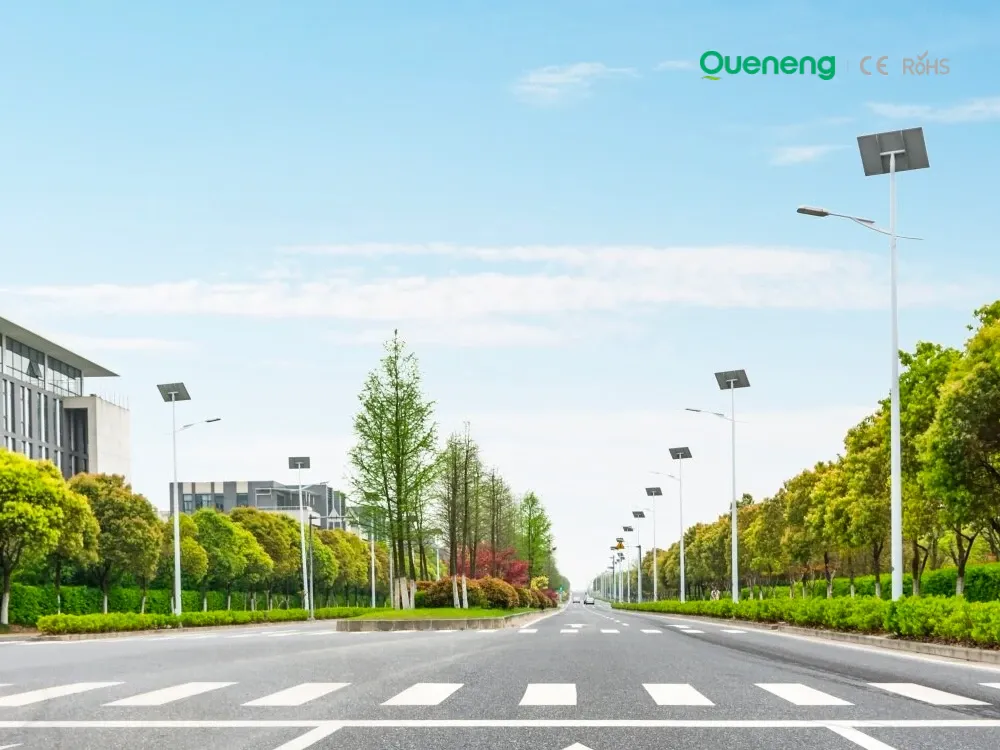
In recent years, the purchase of solar streetlights for municipalities has become a growing trend across the globe. Local governments are under pressure to reduce public expenditure, promote green energy, and create safer communities. Solar streetlights provide a reliable, cost-effective, and sustainable solution that meets these needs. Queneng Lighting, as a leading solar street lighting manufacturer, has supported multiple municipal projects worldwide with customized and energy-efficient solutions.
FAQ
Public Gardens and Landscape Lighting
How much sunlight do solar lights need to function properly?
Solar lights typically require 6-8 hours of direct sunlight during the day to charge fully and provide 8-12 hours of lighting during the night. However, our high-efficiency solar panels are designed to maximize energy capture even in less-than-ideal sunlight conditions.
Battery fundamentals and basic terms
What are the packaging materials for batteries?
2. PVC film, trademark tube
3. Connection sheet: stainless steel sheet, pure nickel sheet, nickel-plated steel sheet
4. lead sheet: stainless steel sheet (easy to solder), Pure nickel sheet (spot welding firmly)
5. plug type
6. protection components such as temperature control switches, overcurrent protector, current limiting resistors
7. cardboard boxes, cartons
8. Plastic shell type
Remote Areas Rural Development
How durable are solar streetlights in extreme rural conditions?
They are designed to withstand harsh weather, including heavy rains, strong winds, and extreme temperatures.
Solar Street Light Luhui
Do Luhui solar street lights have a battery backup for cloudy days?
Yes, each Luhui solar street light includes a rechargeable battery that stores solar energy during the day to power the light at night, ensuring continuous operation even on c
Battery Types and Applications
What is the lifespan of rechargeable batteries used in cordless phones?
1. After charging, the call time becomes shorter every time;
2. The call signal is not clear enough, the reception effect is blurry, and the noise is loud;
3. The distance between the cordless phone and the base needs to be closer and closer, that is, the range of use of the cordless phone is getting narrower and narrower.
Battery Performance and Testing
What is static resistance? What is dynamic resistance?


Queneng's Luzhou Solar Street Light provides sustainable, energy-efficient outdoor LED lighting. Powered by solar energy, it's a cost-effective and eco-friendly solution for illuminating streets and pathways. A reliable and durable LED solar street light.

Queneng's Luxian Reliable Solar Street Light offers energy-saving LED lighting for outdoor use. This durable, solar-powered street light provides reliable illumination, reducing energy costs and environmental impact. A perfect solution for sustainable outdoor lighting.

The Solar Street Light offers an energy-efficient, eco-friendly solution for illuminating outdoor spaces.

Illuminate your outdoor spaces with the Solar Street Light, a cutting-edge solution combining advanced solar technology and energy-saving LED lighting.

Queneng’s Solar Street Lights are designed to provide reliable, energy-efficient lighting for streets, parks, and other outdoor spaces.
If you would like more information about Queneng solar lighting solutions, please send us a message by filling out the form below. Our professional team will get back to you within 24 hours!
Rest assured that your privacy is important to us, and all information provided will be handled with the utmost confidentiality.
Schedule a Meeting

Book a date and time that is convenient for you and conduct the session in advance.
Have more questions about our products or services?

